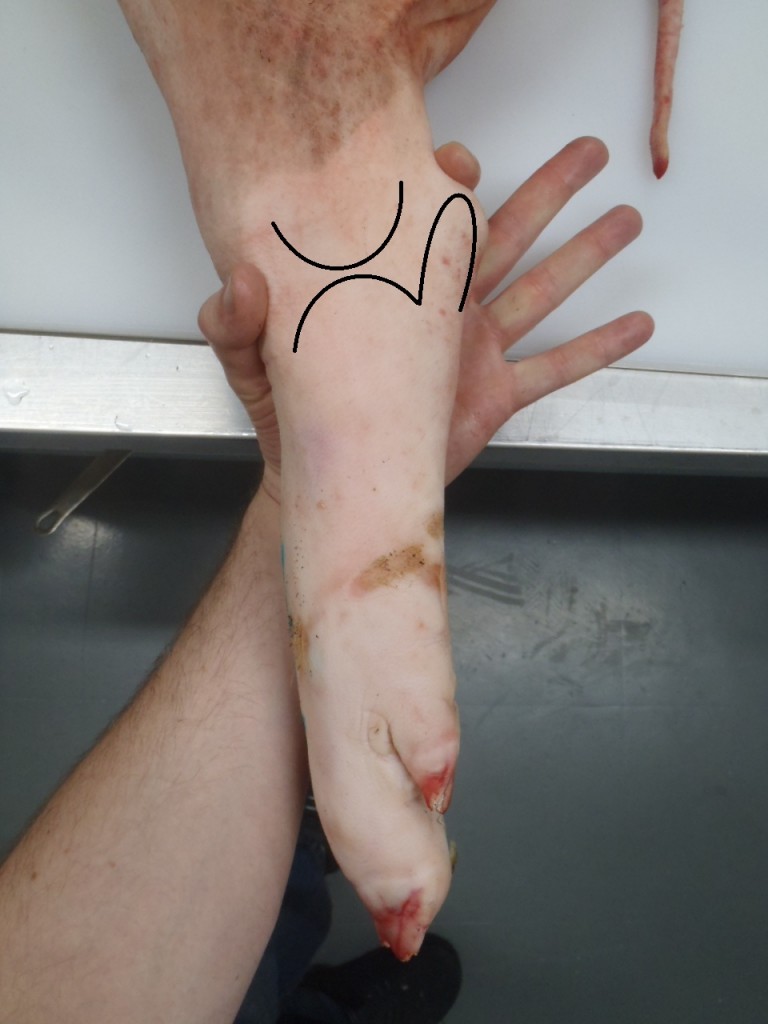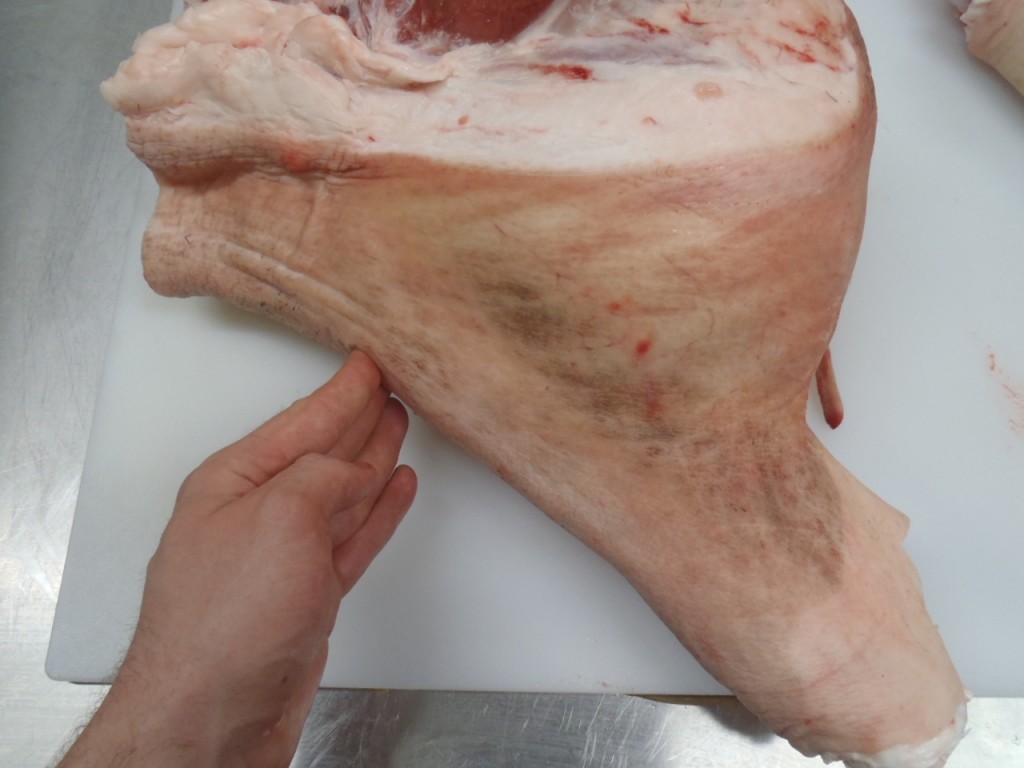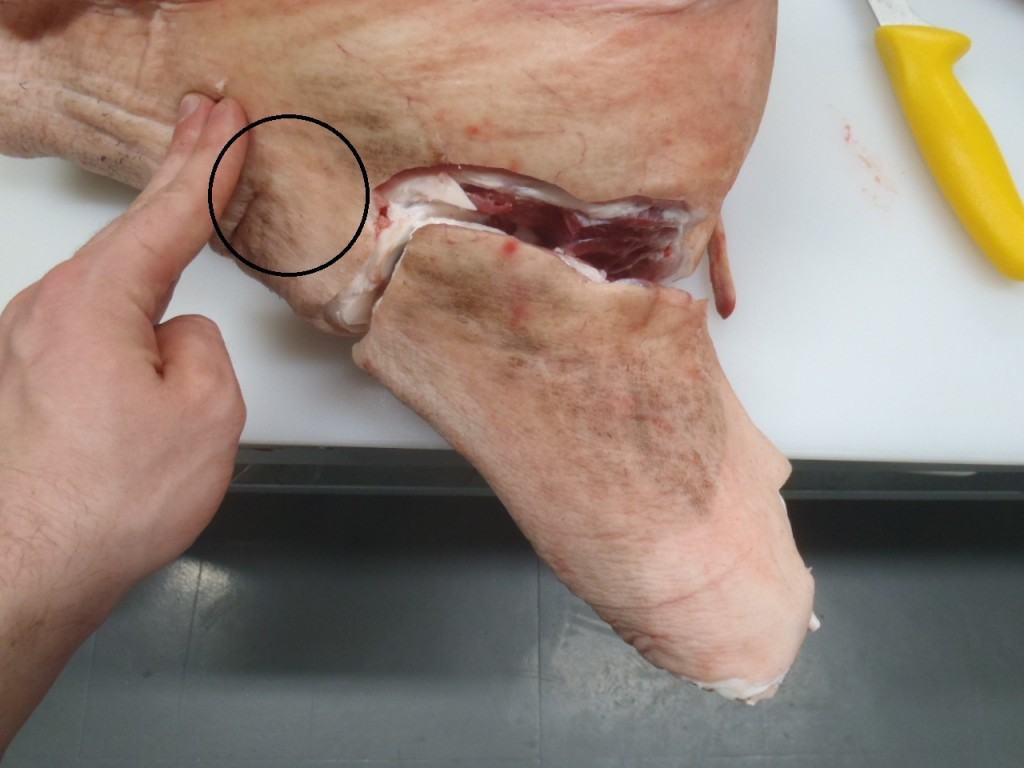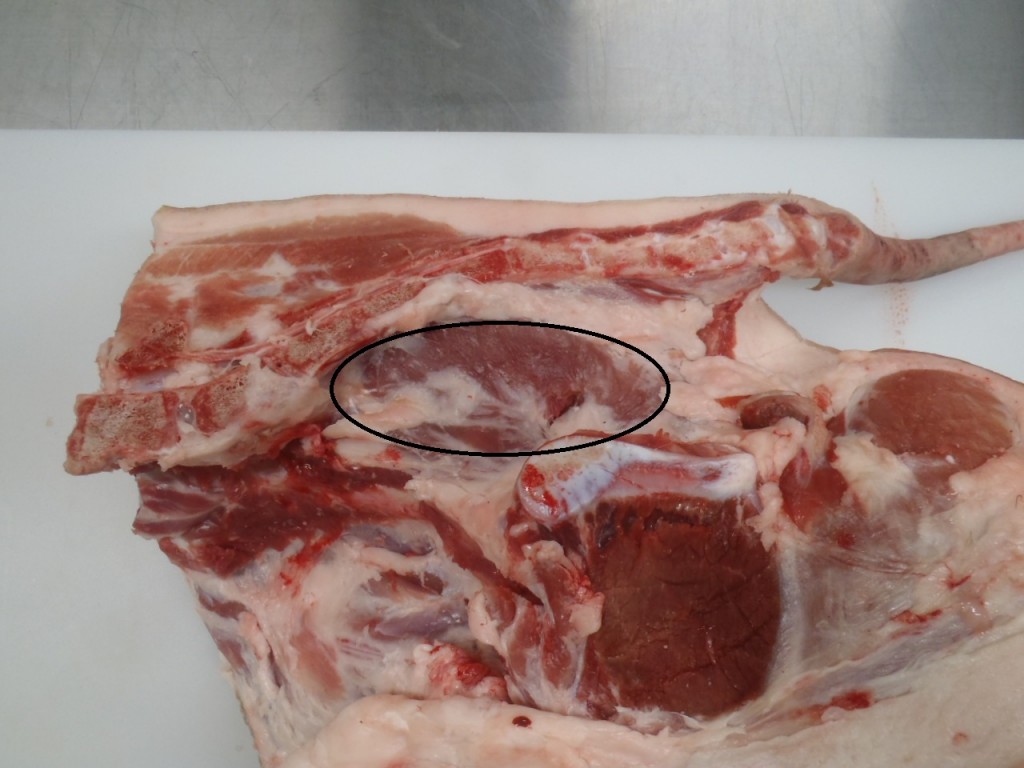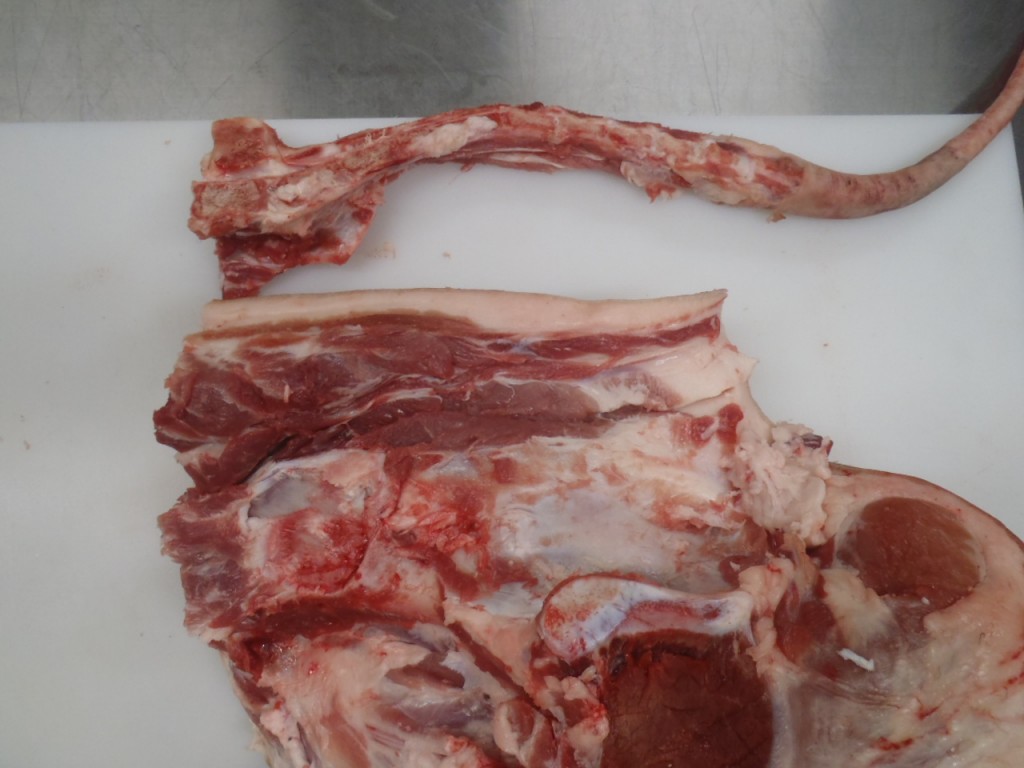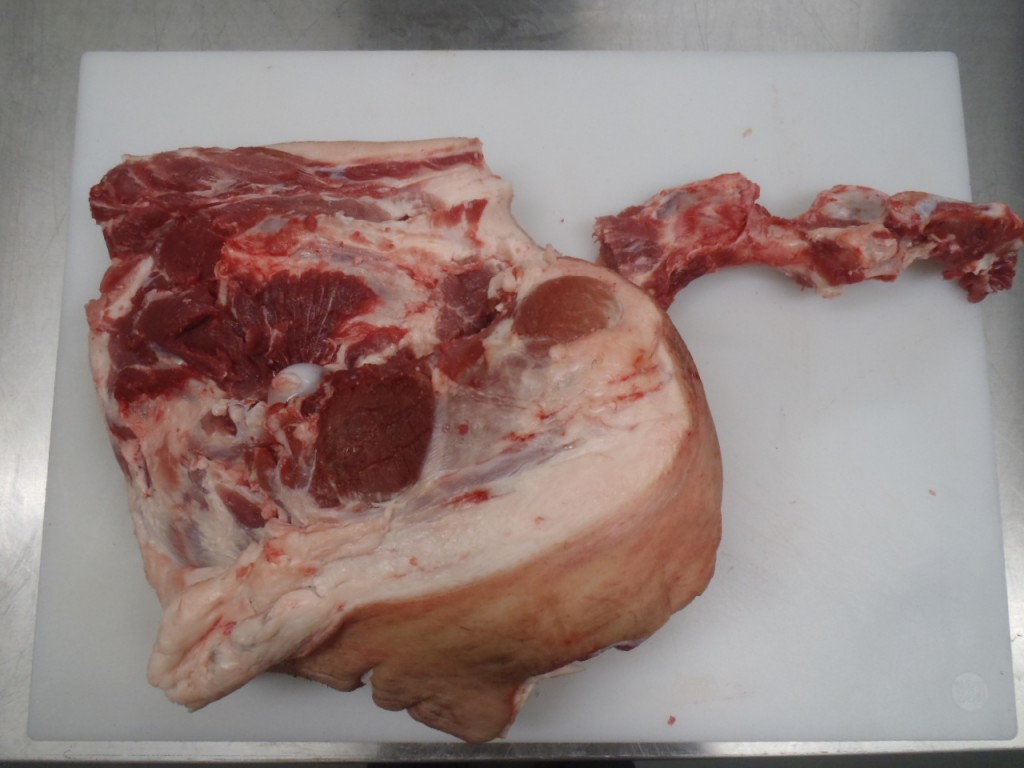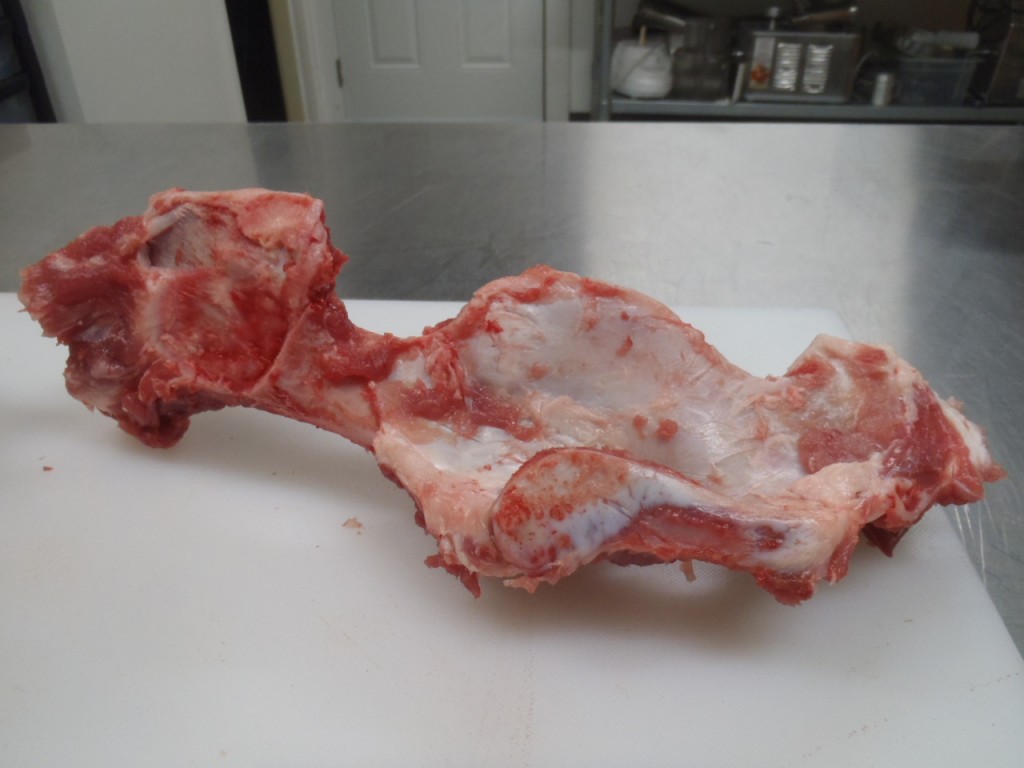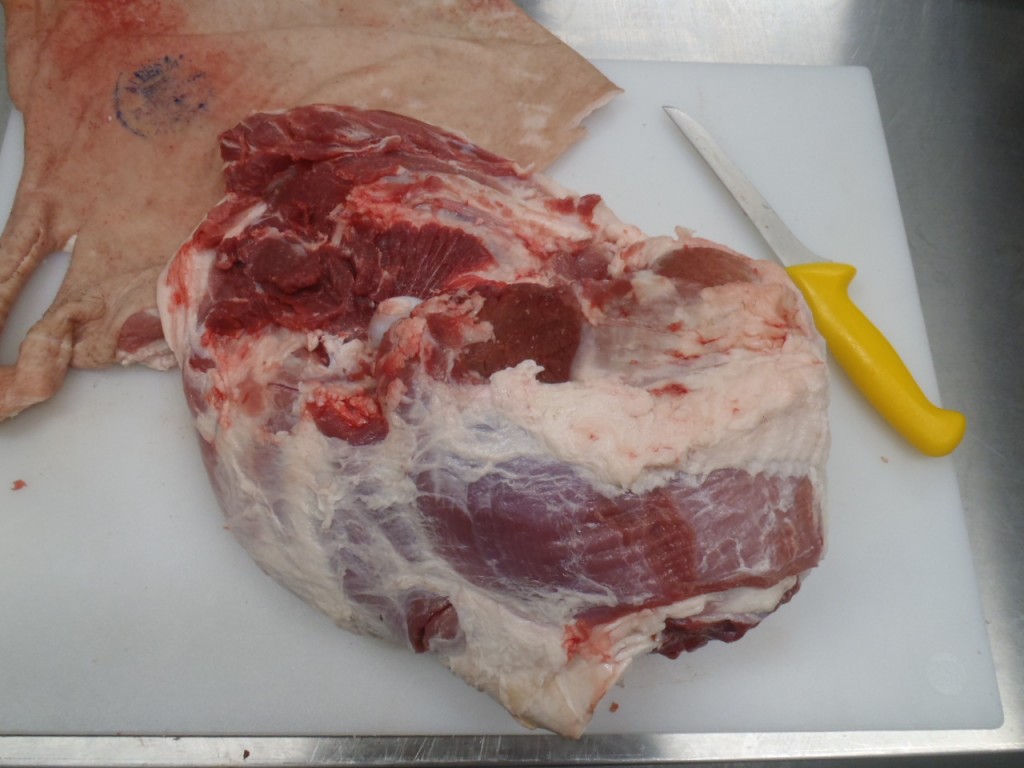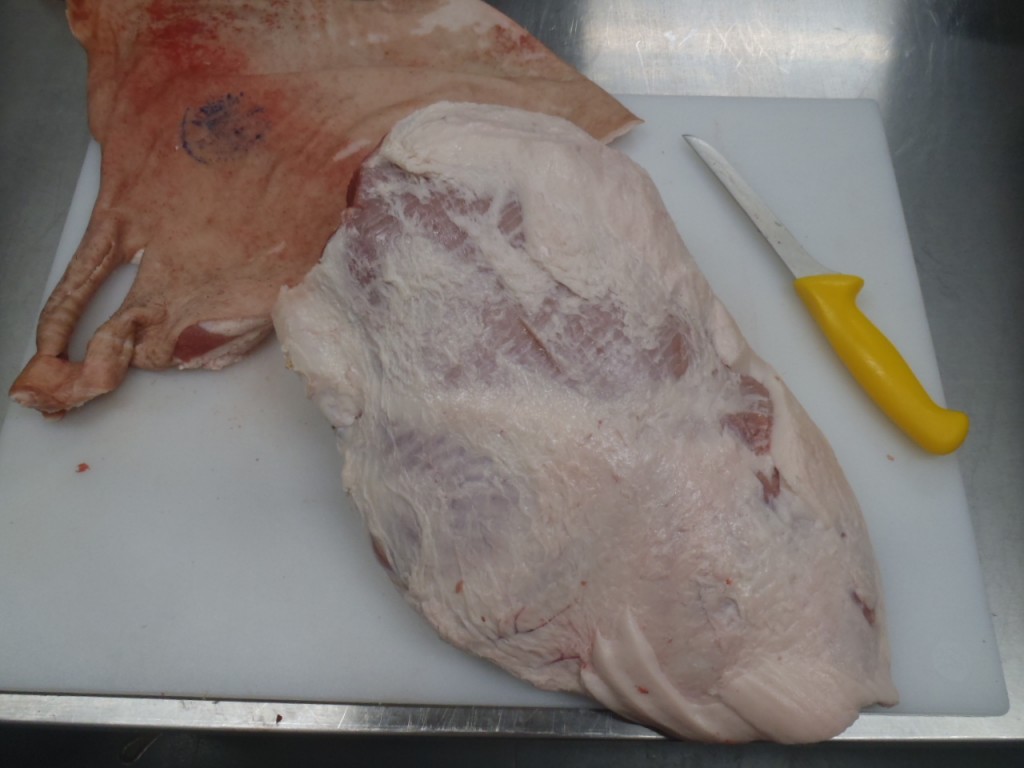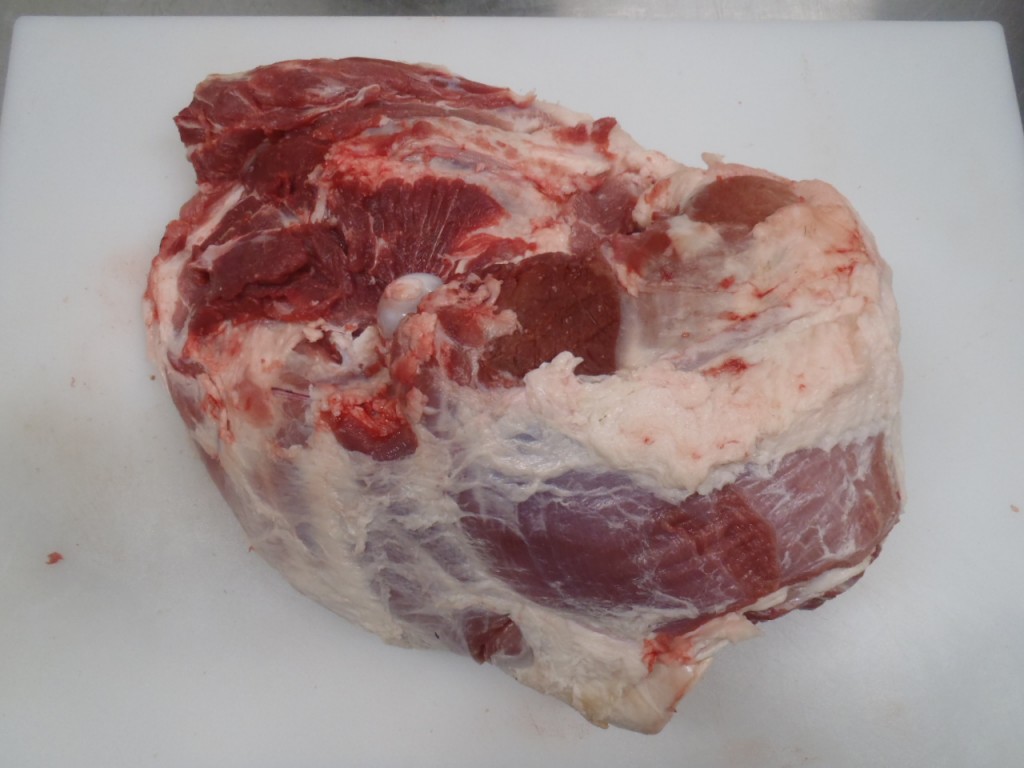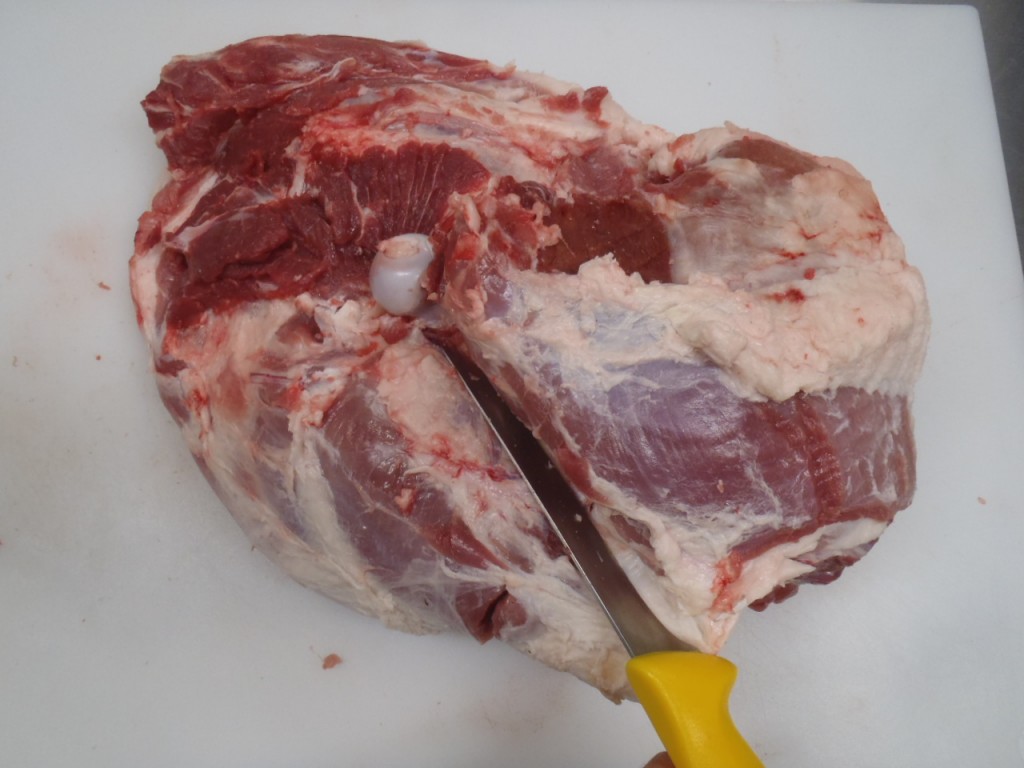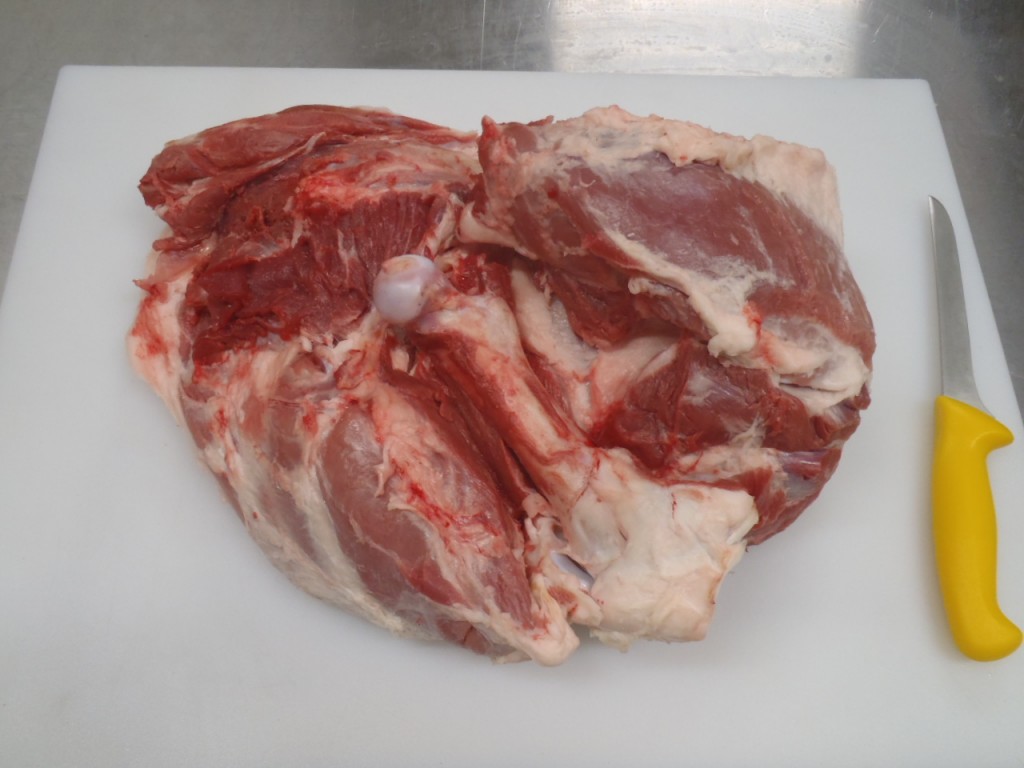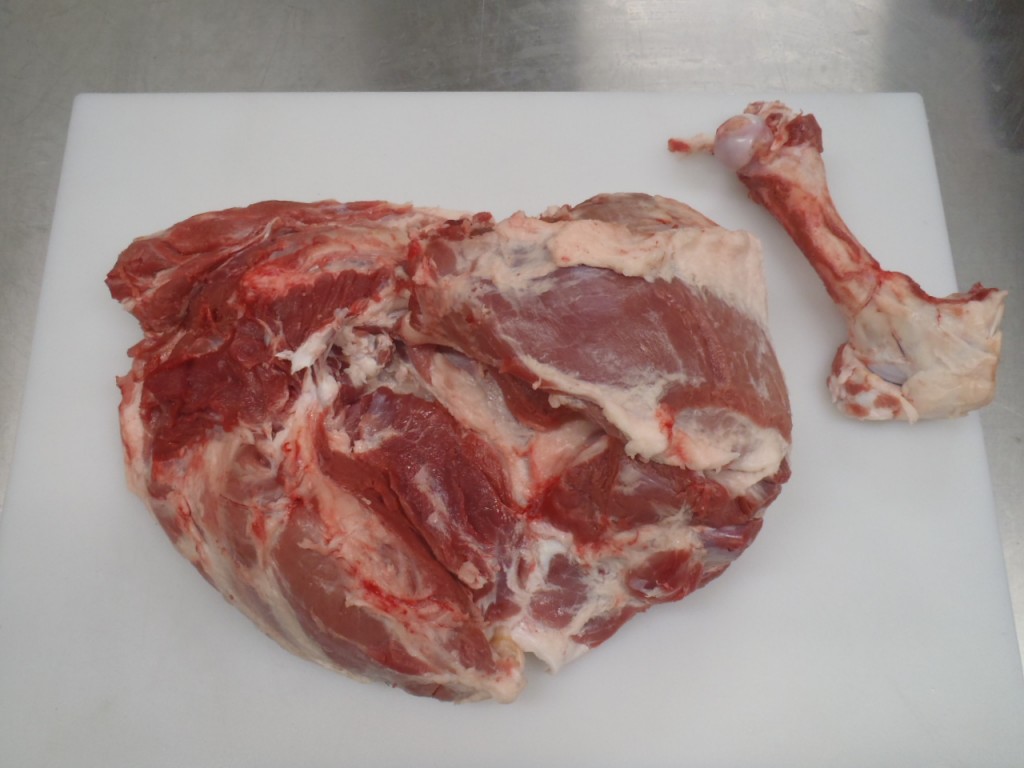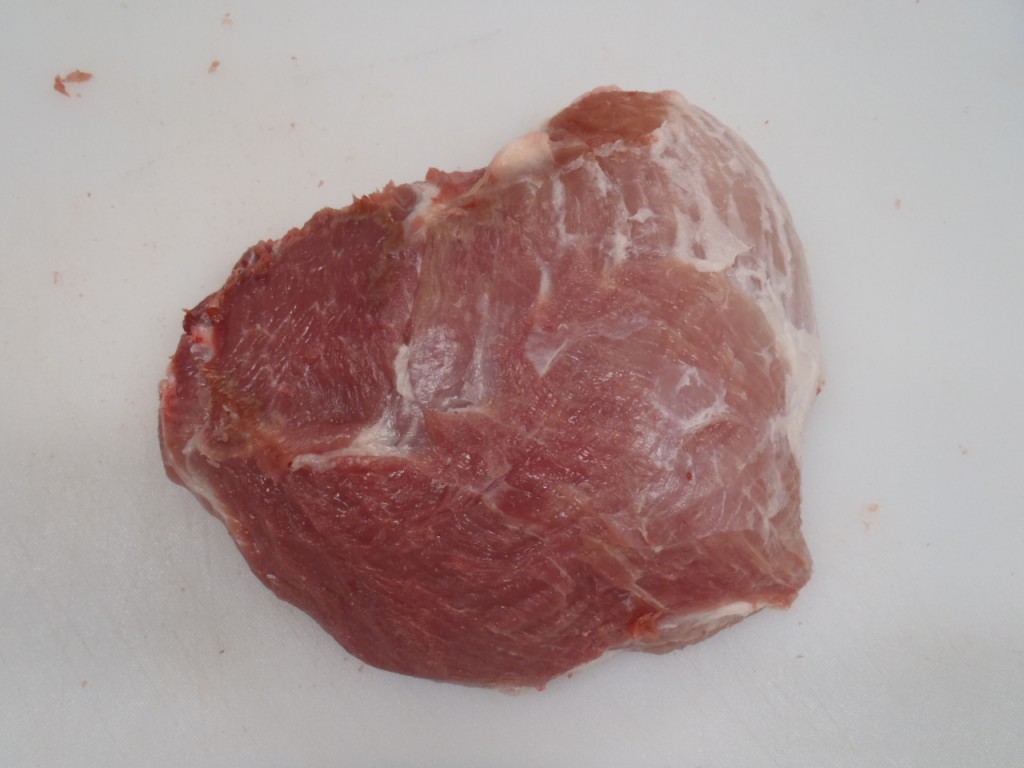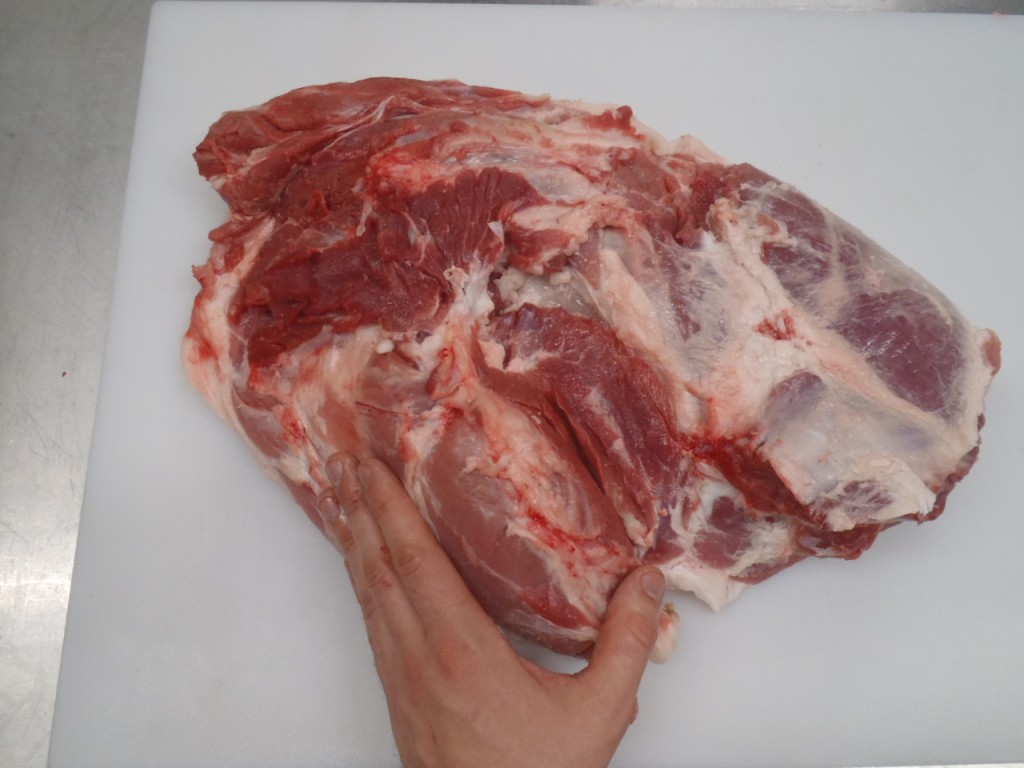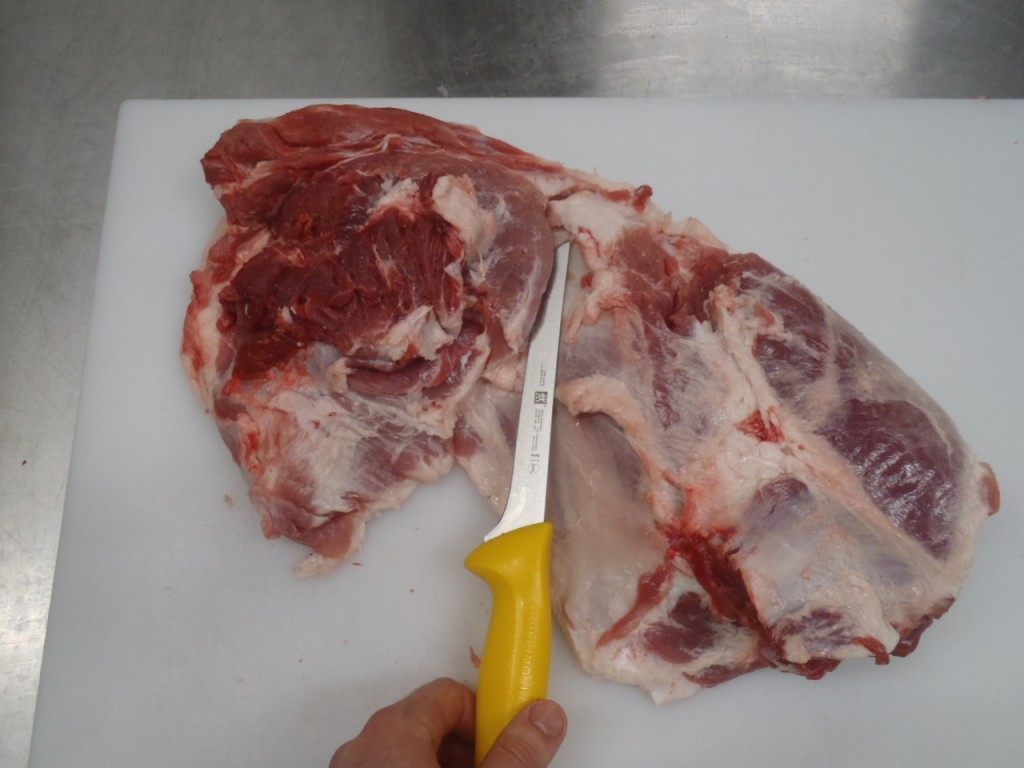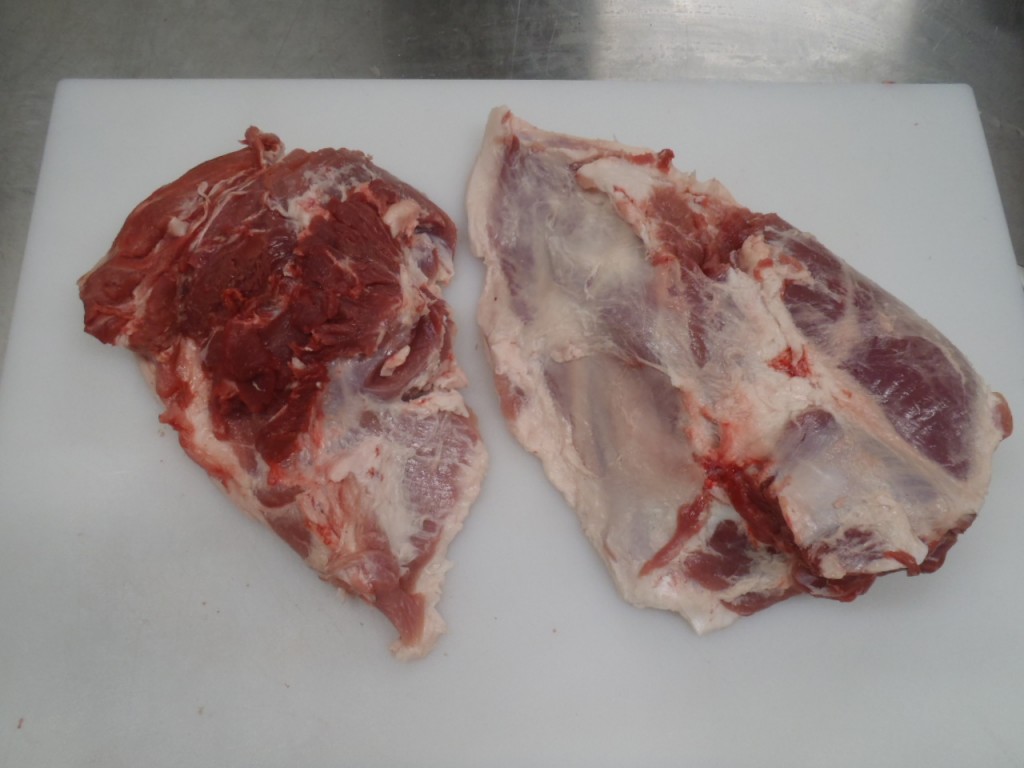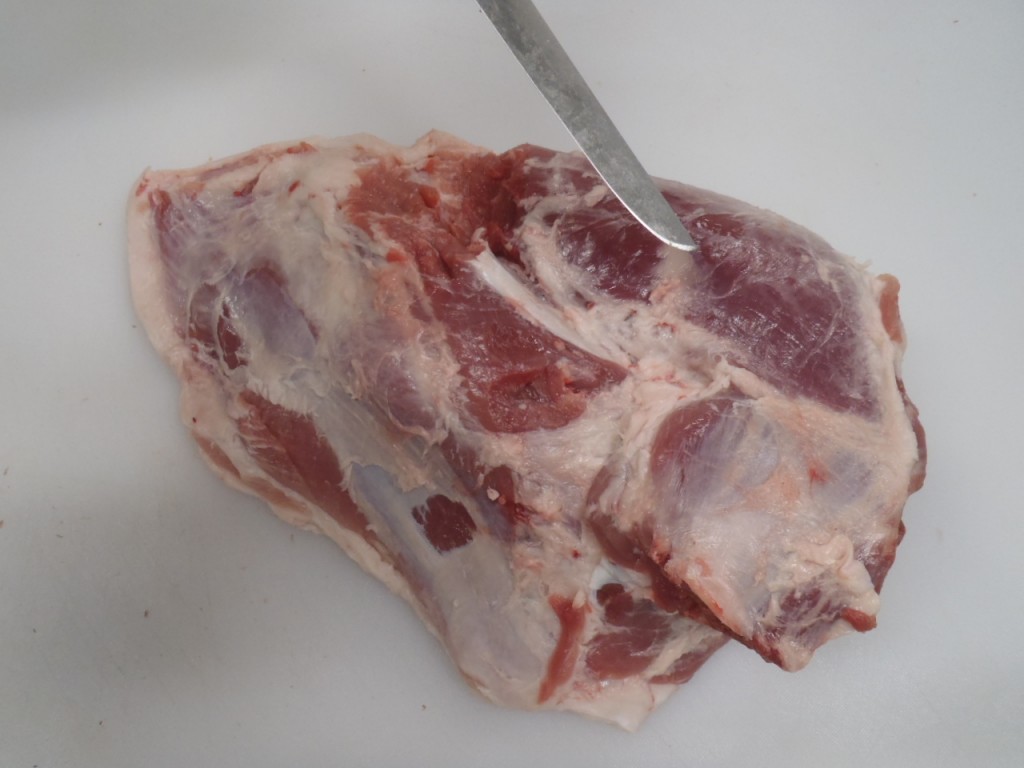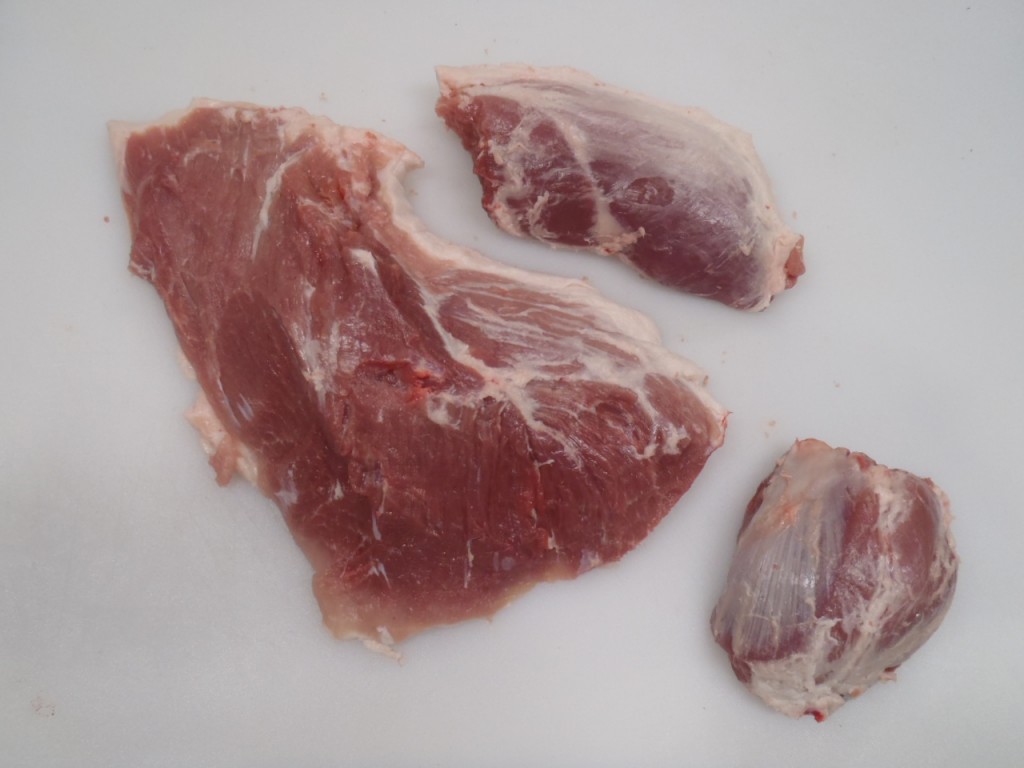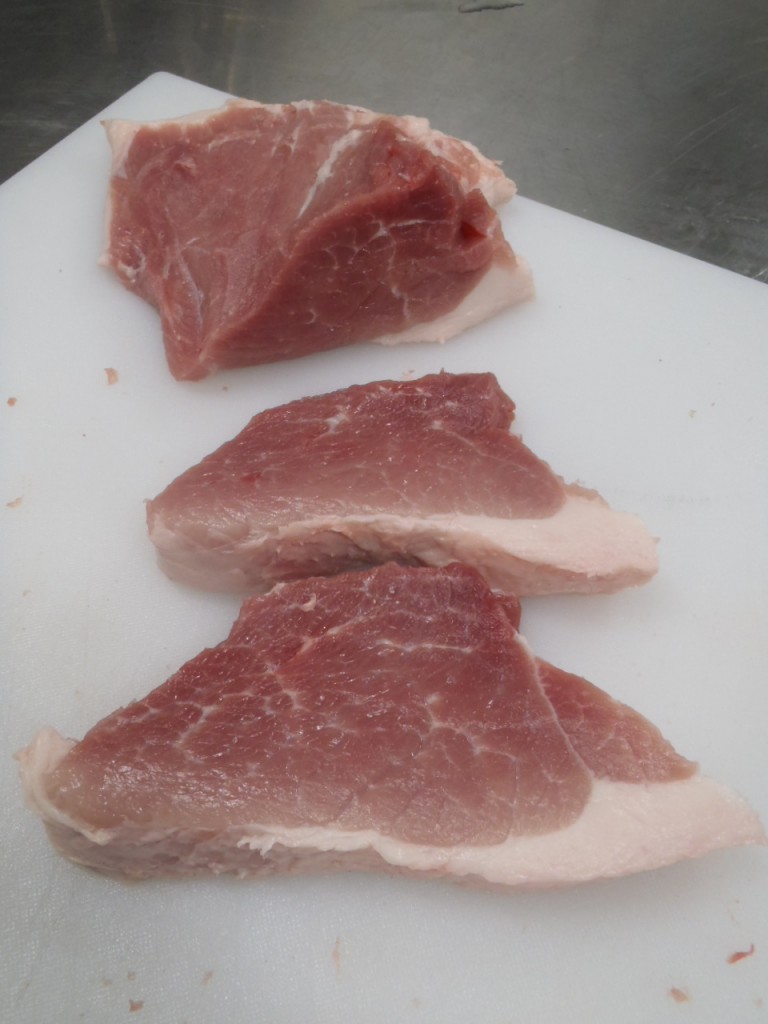Having divided the side of pork into primals, we will now deal with each primal in turn. First the leg.
This is a whole leg of pork. In the Austrian style, it was removed so that the entire hip bone was left within. (In North America, the pig is usually divided so that part of the hip remains on the loin.) Since the sirloin is defined as the loin section where the hip bone is, the entire sirloin is also still attached to this leg. But we’ll talk about that later.
First we remove the trotter. The joint between the foot and the hock is a bit funny. On the lower, hind side of the joint there is a long bone that extends up. With some MS Paint magic, we can show the bone structure:
We cut around that bone, then expose the joint. At this point we can lean on the trotter and use the weight of the leg to snap the joint.
The leg, with removed trotter:
Next we’ll remove the hock. In North America we typically saw through a bone to do this. In Austria, the hock is more often separated at the joint.
Feel along the front side of the leg for the kneecap. The stifle joint is located just below this cap.
As with the trotter, once the joint is exposed we can lean on the hock to snap the joint and then cut any remaining connections with our knife.
Here’s the leg with the trotter and hock removed.
Here’s the leg. Running horizontally along the top you can see vertebrae. The first vertebra on the left is the last lumbar vertebra. Then the vertebrae bend upwards, and become sacral vertebrae.
Below the tail bone we can also see an exposed face of the hip bone. It looks a bit like a white comma.
Right between the tail bone and the exposed hip bone is a small, flat piece of meat that separates easily. In Austria it is called the butcher’s snack (Metzgerjause). There’s no equivalent name in English that I know of. It’s a fantastic little steak.
Here is the removed Metzgerjause, cleaned of some (but not all!) of the fat. Ready to be seasoned and seared over high heat for a mid-butchering snack.
Next we removed the tail bone. I start by cutting around the hind portion like so.
The tail bone and hip bone must be separated. There’s a very narrow, tight adhesion between the two that can be difficult to locate, but once you find it, the knife slides through easily.
The leg, tailbone removed.
Next the hip bone is removed whole. This is a complicated bone with lots of curves. Follow the bone with small, exploratory cuts until it separates from the meat.
Here’s a picture of the hip bone. Lots of curves.
At this point I usually skin the leg.
Just for the sake of completeness, here’s the outside of the skinned leg.
Now we have a big chunk of meat with only one, large bone, the femur, or thigh bone, running through the middle.
This is where the “seam” aspect of Austrian butchery hits its stride. To expose the bone, there is a natural seem shown with the knife below. To the right is the inside round. In Austria this cut is called the Kaiserteil, which literally means “the kaiser’s piece.” To the left is the tip, or sirloin tip, which is called the Nuß in Austria. Nuß means “nut,” and refers to the compact, round shape of the cut.
Anyways, for now we are simply opening this seam to expose the thigh bone.
The leg, with the thigh bone removed.
Now we have a boneless hunk of meat, and we can start separating the different muscle groups along the natural seams.
We started this process by separating the inside round.
Here is the inside round, removed and cleaned. This is the most moist and flavourful cut on the leg (hence the name “kaiser’s piece,” I guess).
The next cut to be removed is the tip.
Here’s the tip, removed. Very round and compact. A good roast.
Next we removed the sirloin. In Austria this is called the Schlussbraten, which means “the last roast.”
To make the sirloin into a nice round, roast, we remove the flat portion as shown below.
Finally we have the outside roast, called the Frikandeau in Austria. In Britian this cut is called the silverside, because of a large band of silverskin, indicated below.
This muscle group also contains the eye of round.
Here is the outside round, cleaned of silverskin, with the eye of round removed.
The outside roast can be cut into beautiful steaks that have much more marbling than most centre-cut loin chops.
So that’s the leg. To recap, it yielded us the following:
- trotter, to be used in soups and stews, or to be boned out and stuffed
- hock, to be cured, smoked, and either simmered for broth or roasted
- tail, hip, and thigh bones to be used in stock
- a large sheet of skin to be used in sausage or crackling
- inside roast
- tip roast
- sirloin roast
- outside roast
- some fatty trim for sausage

